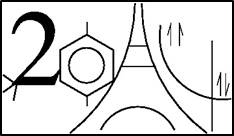Photochemistry reactivity of aminobenzonitrile and benzopyrane were studied. CASSCF calculation were done to analyse the potentiel energy surfaces. We developp model for the potentiel energy surfaces to do quantum dynamic calculations
Over the last decades, progress in experimental techniques combined with theoretical simulations has given access to studying and controlling the photochemical reactivity of large molecular systems with numerous technological applications. For example, it has been shown that the shape of the laser pulse that initiates the photoisomerisation of spiropyrans into merocyanines was determining for using them as optically-controlled molecular switches Aminobenzonitrile-like molecules are another example where different fluorescence patterns are observed, depending of the solvent or its substituents. Such properties are crucial in the field of organic materials to understand and design fluorescent markers or photoswitches.
One major challenge in theoretical chemistry concerns the study of photochemical processes of large molecules (several tens of modes), where conical intersections (CI) play a major role by transferring population between electronic states. This requires the calculation of more than one electronic states and the non-adiabatic coupling between them, the development of quantum chemistry models, and the use of modern quantum dynamics simulation methods
Our strategy is summarised as follows
1- Exploring the potential energy surfaces and optimising specific points (e.g., CI, minima, and TS) with quantum chemistry calculations. In a first stage, these are run at the CASSCF level of theory with a polarised extended basis sets, and the solvent effect is described implicitly with the PCM model.
2- Generating the full dimension potential energy surfaces as analytical functions of the nuclear coordinates
3- Solving the time-dependent Schrödinger equation for the nuclei for all the degrees of freedom. This is achieved with the multilayer multiconfiguration time-dependent Hartree method (ML-MCTDH)
- Autre

 PDF version
PDF version
